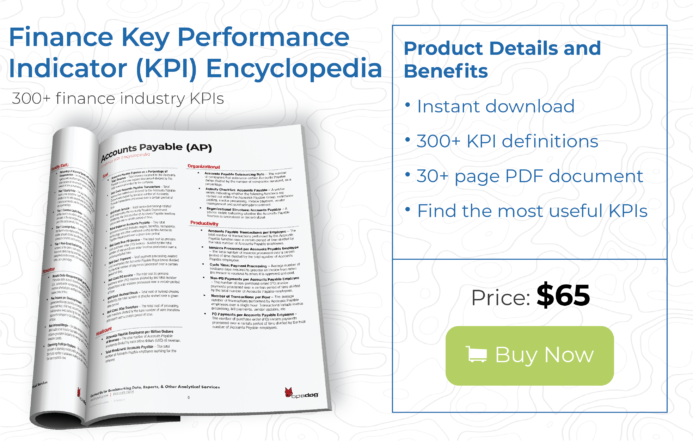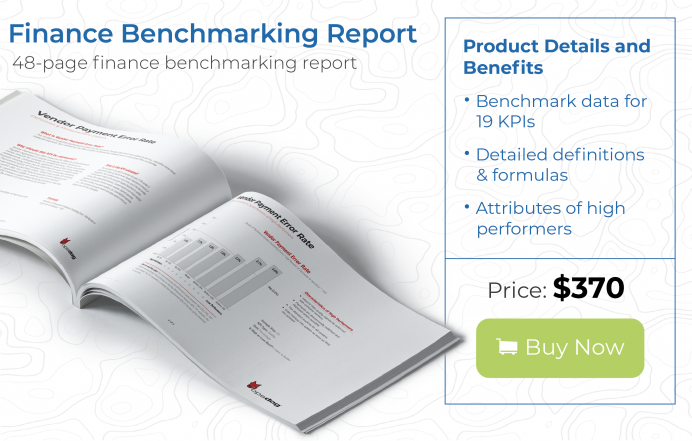The finance function—which can include general accounting, accounts payable, accounts receivable, budget and analysis, cost accounting, financial reporting, payroll, internal controls, treasury, and more—is evolving. In the past, the finance function focused mostly on historical transactional financial reporting such as the balance sheet or profit and loss statements.
But the role that the finance department plays in banks is changing. The work is becoming more complex, in part due to regulatory burdens and complex business models. Banks increasingly view the finance function as a true partner to the CEO and look to the chief financial officer (CFO) to provide strategic input to the business and improve business results.
What is Finance Department Size Benchmarking?
Benchmarking finance department size can be defined as comparing a variety of finance department processes and metrics, related to the size of the department in question, and comparing this collected data against finance industry standards or against peers to make informed business decisions.
Finance department size benchmarking allows banks to evaluate the efficiency and performance of the finance department using data and analytics and then compare that performance to peer banks. In finance benchmarking, banks focus on indicators such as the amount of time it takes for finance close and invoice processing or the number of finance employees needed to support the rest of the bank.
Banks typically use finance benchmarking to determine if staff levels are sufficient or if they need to reduce staff. Having too many employees results in high overhead costs, turning this non-revenue producing function into even more of a cost burden.
Note that finance benchmarking does not measure the financial health of the bank itself but the productivity of the finance function.
Why It’s Important to Measure Finance Department Size
Benchmarking finance department size enables banks to make changes to a variety of levers that can improve productivity. For example, if a bank determines that the size of its finance function is too large, it can reduce staffing by automating manual tasks. Having too many staff could also be the result of poor quality data and non-integrated systems, outdated technology, weak or non-standardized processes, repetitive tasks, lack of training or coaching, and low-value reporting that saps employees’ time.
However, finance department size is just one measure of the department’s productivity. Banks must balance department size against quality and effectiveness. A bank may have a low number of collections employees compared to banks of a similar size, but if recovery rates are below industry benchmarks, the bank may need to hire additional collections staff.
Benchmarking finance department size is a continuous process. As a result of benchmarking, banks can create a plan to change how the department functions and the types of skills employees need.
How Finance Department Size Impacts Benchmarks
Since the finance department is not a revenue generating function, banks are keen to keep overhead costs low by ensuring that finance is not overstaffed and that the right employees with the right skills are in each role. The number of finance employees compared to the total number of employees in the bank is a good indicator of how productive and efficient the finance department is. A low percentage of finance employees to total number of employees is better than a high percentage.
However, compared to industries that focus intensely on cost control such as manufacturing or consumer packaged goods, bank finance departments tend to manage more complex tasks such as treasury management and regulatory reporting and thus require a greater percentage of finance staff compared to total number of employees.
Outsourcing parts of the finance function is common, especially in less complex areas such as payroll. However, banks should not include third-party providers when calculating department size, even if those providers are on-site at the organization. However, banks should include both full-time and part-time employees and front-line employees as well as managers and administrative staff.
Examples of Finance Department Size Benchmarks
There are a variety of benchmarks that rely on finance department size to analyze the productivity of the finance department. Here are a few of the most widely used in benchmarking finance department size:
Finance Department Size Benchmark #1: Amount Collected Per Collections Employee
The collections department is responsible for collecting on delinquent accounts receivables. A high recovery rate can significantly improve cash flow. This metric gauges the productivity and effectiveness of employees who work in the collections department by measuring the average dollar amount of delinquent balances collected per collections employee within a defined time period.
A low dollar amount per employee could be due to a lack of segmenting and prioritizing which accounts to contact, ineffective call scripts, time wasted calling incorrect phone numbers, duplicate efforts, untrained or unmotivated employees, and employees having to spend too much time on manual and administrative tasks rather than making collection calls.
This metric can be skewed by high balance accounts. For example, a collections department that collects on delinquent mortgages will likely have a higher per employee amount collected than collections employees in auto loan collections with lower account balances.
Finance Department Size Benchmark #2: Accounts Per Collections Employee
Similar to the benchmark above, accounts per collections employee measures the productivity and effectiveness of the collections function. Rather than measuring the amount collected per employee, this metric divides the number of delinquent accounts managed by the collections department by the total number of employees working in collections during a specific time period.
A higher number means that collections employees are handling a large number of accounts. If the number is low, examine whether employees are wasting time calling accounts that would become current on their own and consider automating dialing and follow-ups.
Finance Department Size Benchmark #3: Payroll Staffing Ratio
The payroll function takes care of payment processing, payroll inquiry, dispute handling and resolution, correcting payroll errors, and off cycle check processing. Payroll staffing ratio measures how many employees work in payroll versus work for the entire bank. Fewer payroll employees handling payroll for a larger number of employees indicates that the payroll function is more effective.
Banks often use this metric to analyze whether or not they should outsource the payroll function.
Finance Department Size Benchmark #4: Finance Staffing Ratio
The finance department typically includes employees working under the CFO who are responsible for monitoring the financial health and performance of the bank. The size of the department, relative to the total headcount of the bank, indicates how effective the entire department is. Since the department can include disparate functions such as accounts receivables, tax and treasury management, and budgeting and forecasting, the productivity within each function can vary widely.
The complexity of the bank will also impact finance department size, with a global investment bank likely employing a larger finance department compared to total number employees than a small community bank.
Final Thoughts
While the finance department is often seen as a cost center that doesn’t generate revenue, the department does have the potential to improve the bank’s profitability. Although banks may aspire to having a low percentage of finance department employees compared to the number of total employees, banks need to balance overhead costs with having enough staff to give the finance department time to focus on supporting management with business intelligence and other value-added activities.
This article just scratches the surface of all the ways to utilize benchmarking finance department size to improve business operations. For a complete list of finance department KPIs, download our comprehensive Finance Key Performance Indicator Encyclopedia here.
If you need additional help in lowering finance department expenses or boosting productivity, contact us for information concerning our Benchmarking Research and business intelligence implementation services and we’ll quickly help you with benchmarking finance department size, providing you with presentation-ready deliverables at an affordable price.




